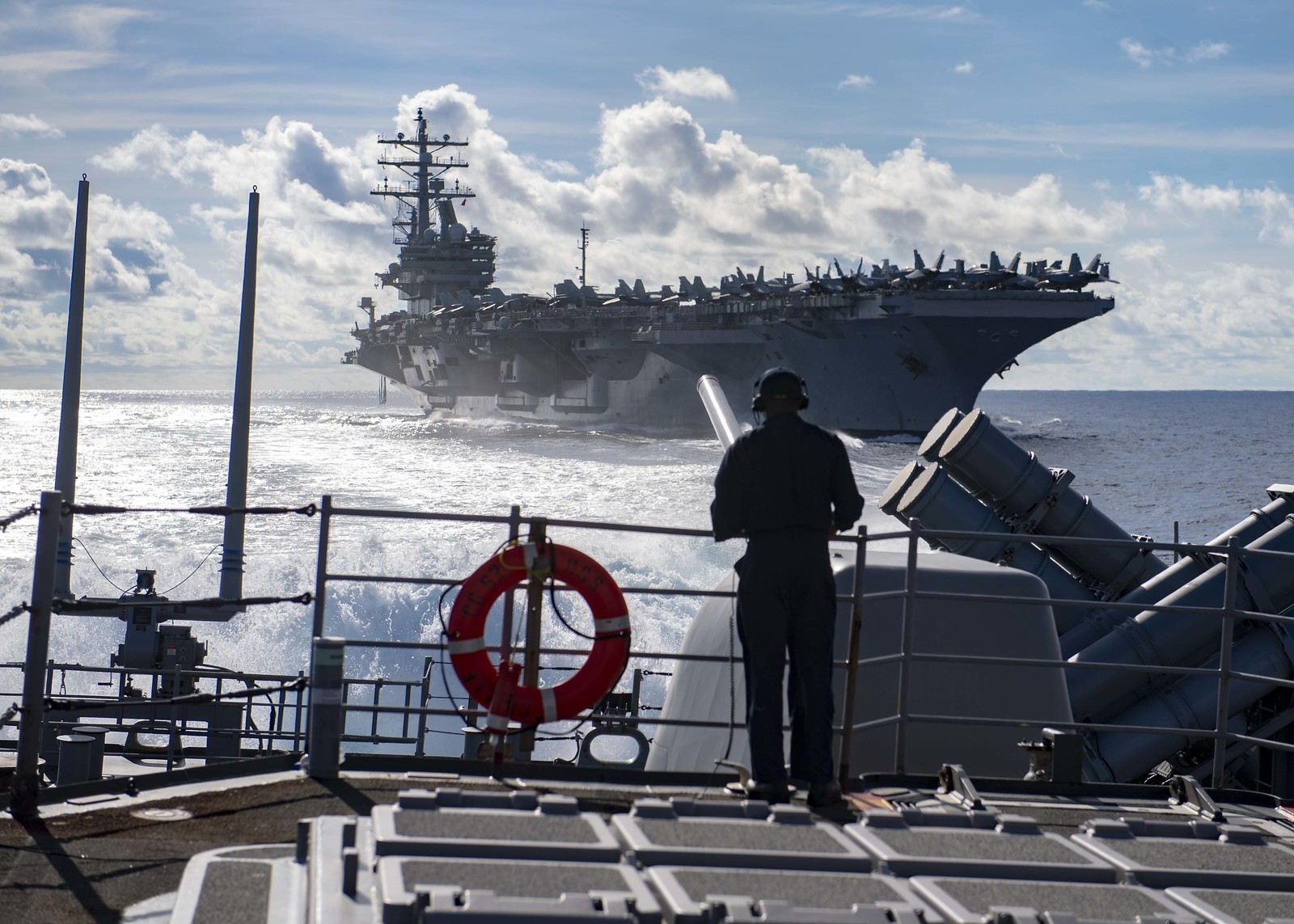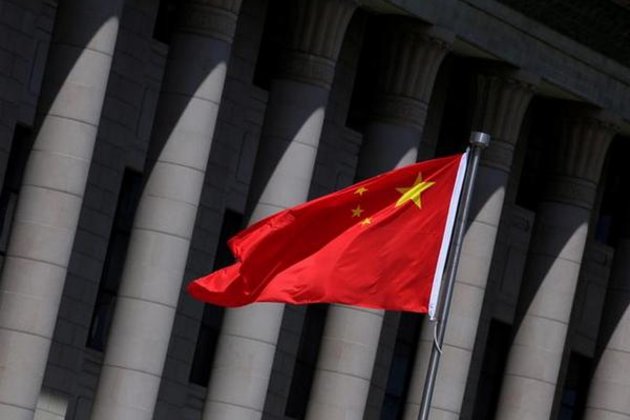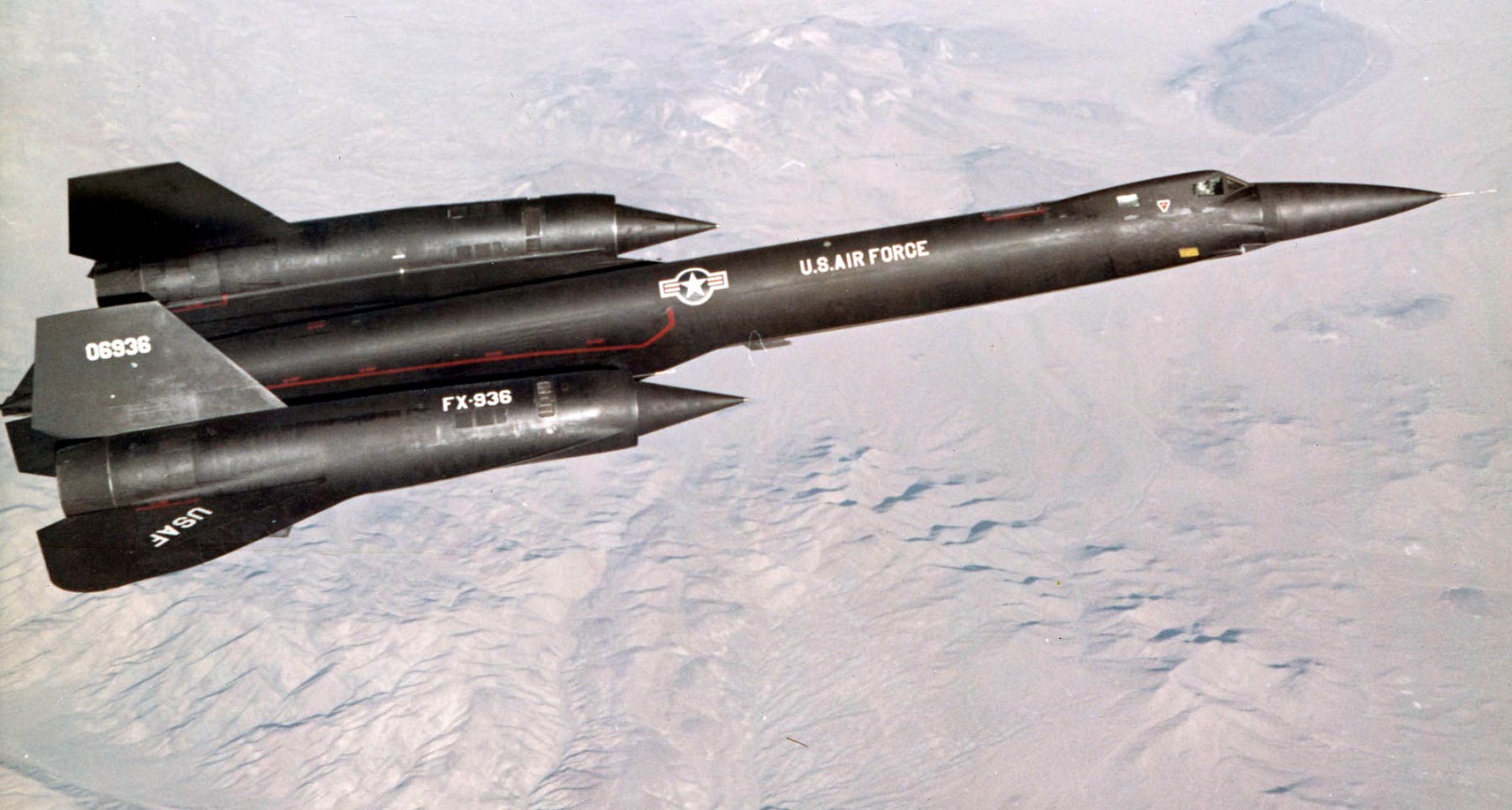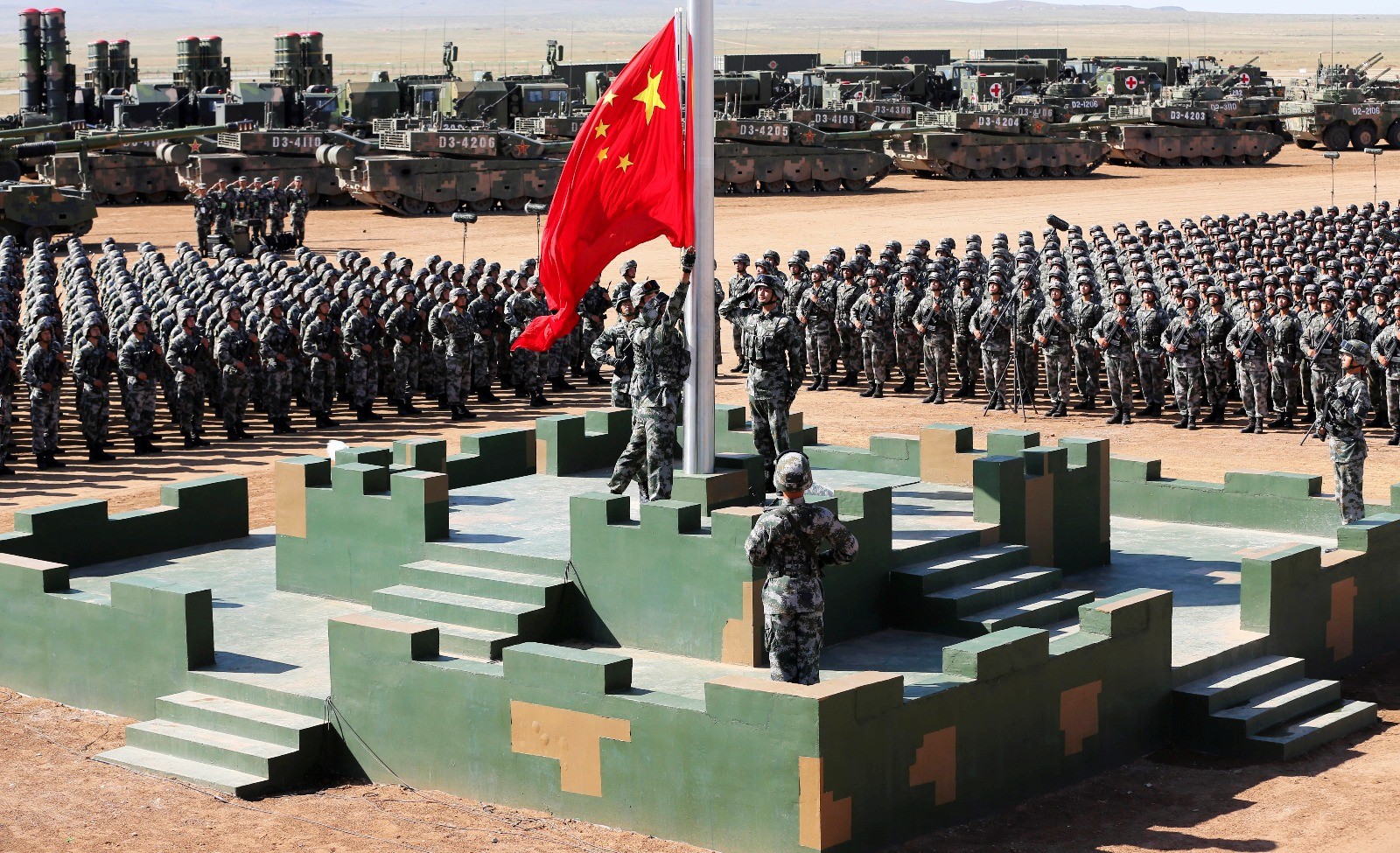Opinion
China’s hegemonic choice in the Mekong region
The Belt and Road Initiative (BRI) has further bolstered China’s status in the region as it includes the China–Indochina Peninsula Economic Corridor — one of the six main BRI corridors.

If you are the world’s second-largest power, what do you dream about? How do you go about making this dream come true? Put bluntly, the Mekong River region represents a crucial testing ground for Beijing’s mid- to long-term ambitions — not acknowledged officially — to become the hegemon in East Asia and possibly beyond.
This is in part because the Mekong River region is situated in China’s immediate vicinity. The region is comprised of mostly small countries amenable to influence but with great strategic importance.
China is also the river’s most upstream riparian, with more than 10 mainstream dams completed or under construction. The geographic and economic advantages over the other Mekong countries have already made China the Mekong’s quasi-natural hegemon.
The key question for China’s leaders is how to best perform this hegemonic role. One of the primary objectives of a hegemon is to ensure compliance. Four mechanisms can be identified to achieve this: coercive, utilitarian, normative and ideological.
China makes use of a mixed but interlinked strategy that seeks to avoid open coercion of the Mekong river states. First, China most visibly relies on a utilitarian approach that offers economic and financial incentives to meet diplomatic ends.
To no small extent, this approach is also driven by domestic rationales, especially China’s intention to develop its remote south-western regions and provide them with access to new markets.
Over the 2000s, China rapidly emerged as the top trader, investor and donor in the Mekong River region, spurring much of the economic growth there.
The Belt and Road Initiative (BRI) has further bolstered China’s status in the region as it includes the China–Indochina Peninsula Economic Corridor — one of the six main BRI corridors.
Consequently, the countries in the Mekong River region have, to varying degrees, become economically dependent on China. This is particularly true for Laos and Cambodia, but even Vietnam, not generally China-friendly, is struggling. Second and more recently, China has additionally engaged in a normative approach — signing treaties and building institutions — to protect its position as hegemon. Over the course of the 1990s as China’s renewed interest in the Mekong River region slowly gathered speed, it was still confronted with a predetermined institutional order dominated by Western actors and Japan.
The founding of the Lancang-Mekong Cooperation (LMC) in March 2016 reflects China’s growing desire to exercise greater authority over the region. The mechanism boasts a comprehensive agenda, exclusive membership for all Mekong riparian countries and enormous financial resources from which they can draw. While the LMC should do much more in terms of codifying rules and procedures for cooperation, the mechanism still has the potential to eclipse other firmly established regional bodies.
This includes the Mekong River Commission and the Asian Development Bank-led Greater Mekong Subregion (GMS), let alone smaller venues like the US-driven Lower Mekong Initiative or the Japan–Mekong Summit.
Third and finally, China has long been anxious to sell its goals and actions in the Mekong River region under the benign slogan of ‘common development and prosperity’. This persistent rhetoric belongs to an attempt at discursive knowledge construction, which not only aims at the acceptance of China’s authority, but also at the internalisation of China’s values and norms. It has steadily evolved into a sanctioned discourse presented as a win-win strategy without alternatives.
Highways and railroads for enhanced connectivity and dam building for increased energy supply are the examples of the narrative that touts all-out economic progress as a panacea. Yet despite China’s great efforts, not everybody in the region has bought into China’s rhetoric as there are many that do not benefit from China’s behaviour.
This is especially true for the large number of local communities that make their living directly from the Mekong’s resources.
These communities continually challenge China’s preferred discourse, turning China’s dam-building activities into a particularly controversial issue.
Blaming China’s dams for current low water levels is the latest episode of an enduring counter-narrative that questions China’s sincerity. It also seeks to shift attention to urgent ecological matters, illustrated by the motto
‘We want to eat fish, we cannot eat electricity.’ But these local communities do not always enjoy governmental support, making it impossible for them to effectively challenge Beijing’s strategy.
This is particularly true in Laos and Cambodia where — often China-sponsored — dam building is high on the national agenda. For China’s leaders, the status quo means that their hegemonic project in the Mekong River region is not yet accomplished. The recent US–Japan announcement to set up a joint Mekong Power Partnership indicates that powerful external players are willing to remain involved in the region and present it with an alternative to China.
China must choose between two distinct forms of hegemony. One is characterised by positive leadership, particularly through the creation of fairly distributed public goods and the inclusion of all actors in decision-making processes. The other is narrowly focused on domination and self-interest.
These two forms are similar to the Chinese terms wangdao (benevolent rule) and badao (despotic rule). While being a hegemon is not easy, China’s leaders can still do much more to tip the scales in favour of the virtuous wangdao in the Mekong region. Sebastian Biba is a Research Fellow at the Institute for Political Science, Goethe University Frankfurt.
Author: Sebastian Biba, Goethe University Frankfurt
China’s hegemonic choice in the Mekong region | East Asia Forum
Opinion
Military rituals and military culture in China

Military culture influences military thinking and military strategy. Today, the armed forces of the major powers have the goal of defending their national interests and contributing to world peace.
(more…)Opinion
Forget the SR-71 Spy Plane: Meet the CIA’s A-12 (Was It Even Better?)

Key point: Both spy planes played key roles in the Cold War.
Analysis of Week’s photos located the USS Pueblo near Wonsan anchored next to two patrol boats—and also revealed that Pyongyang had not mobilized its troops for war. This led Johnson to rule out plans for a preemptive or punitive strike in favor of diplomatic measures which eventually saw the ship’s abused crew released nearly a year later.
On October 30, 1967, a CIA spy-plane soared eighty-four thousand feet over Hanoi in northern Vietnam, traveling faster than a rifle bullet at over three times the speed of sound. A high-resolution camera in the angular black jet’s belly recorded over a mile of film footage of the terrain below—including the over 190 Soviet-built S-75 surface-to-air missiles sites.
The aircraft was an A-12 “Oxcart,” a smaller, faster single-seat precursor variant of the Air Force’s legendary SR-71 Blackbird spy plane.
The jet’s driver, Dennis Sullivan had earlier flown one hundred combat missions in an F-80 Starfighter over Korea for the U.S. Air Force. But Sullivan was technically no longer a military pilot—he had been “sheep-dipped,” temporarily decommissioned to fly the hi-tech jet on behalf of the CIA. He now sat in the cramped cockpit in a refrigerated space suit, as the friction generated by his plane’s Mach 3 speeds heated the cockpit to over five hundred degrees Fahrenheit.
Sullivan noted warnings light up on his instrument panel as Vietnamese Fan Song radars locked onto him. But they did not launch missiles. In twelve-and-a-half minutes he completed his run and looped around over Thailand, where he received aerial refueling. Then he embarked on a second pass.
But the North Vietnamese were waiting for him. A missile launch notification warned him that a 10.5-meter-long missile was heading towards him.
Decades later, Sullivan described in a speech seeing one of the missiles streak just past him, two-hundred meters away.
“Here comes a big’ol telephone sailing right by the cockpit—going straight up. That’s interesting . . . So I continued down the route, and didn’t see anything—until I got down the road, and then I could see behind me in the rear-view periscope at least four missile contrails, all spread out. Those four contrails went up about 90-95,000 feet and all turned over, bunched up in a line, headed for my tail end.”
The A-12 officially had a maximum speed of Mach 3.2—but the missiles that were following Sullivan could attain Mach 3.5.
“I said, ‘Holy smokes—those things fly pretty good up there for something which doesn’t have much in the way of wings.’ So I watched them come.… They’d get up right behind me, very close, and all of the sudden there’d be a big red fireball—a big white cloud of smoke—and you’d immediately pull away from it. You were going thirty miles a minute. [Note: actually, 41 miles per minute!] Every one of those SAMs guided absolutely perfectly and did the same darn thing.”
The missile’s 440-pound proximity-fused warhead was designed to swat planes out of the sky within 65 meters of the point of detonation. However, in the thinner air of the upper atmosphere, its fragments could travel up to four times as far.
Sullivan escaped and landed his A-12 in Kadena Air Base, where it spent several minutes cooling on the tarmac before mechanics could even touch its friction-heated skin. The stress of the heat and high speeds exacted a steep physical toll on the jet’s pilots, who lost an average of five pounds of body weight on the completion of their three to four- hour missions.
He was sitting for debriefing when mechanics burst in the room to show him two metal fragments from a missile’s nose cone they had found buried under his low left wing—just shy of his jet’s fuel tank.
Later when, Sullivan’s camera footage was found to have captured the ghostly white contrails of six surface-to-air missiles surging towards him from the ground.
Operation Black Shield
The CIA’s twelve ultra-fast A-12 jets were doomed to a brief operational career after the first flight in 1962. Following on the heels of several U-2 spy plane shootdowns, Washington was no longer willing to authorize overflights of Soviet territory which the A-12 had been designed to perform. Meanwhile, the Air Force ordered a larger SR-71 variant of the A-12 that was deemed superior in a “fly off” in November 1967. Unwilling to fund both highly similar aircraft, the CIA’s A-12 fleet was promptly scheduled for retirement.
However for ten months, the A-12 briefly filled a vital niche providing rapid high-value photo intelligence over Asia, where the political and military risks were deemed acceptable. Between May 31, 1967, and March 8, 1968, CIA drivers flew A-12 on twenty-nine spy missions over Cambodia, North Korea and Vietnam in an operation codenamed Black Shield. The jets flew out of Kadena Airbase in Okinawa, Japan, supported by over 250 support personnel.
Initially, President Lyndon B. Johnson was concerned by reports that North Vietnam had obtained Surface-to-Surface (SSM) missiles for attacks on South Vietnam. On May 31, 1967, CIA driver Mele Vojvodich took of in a rainstorm and recorded a mile-long reel of camera footage covering most of Northern Vietnam. The reel was then air-transported for development by Kodak in Rochester, NY. The verdict, confirmed by subsequent overflights, was that Hanoi had no SSMs after all.
A-12 intelligence often directly influenced LBJ’s decisions to commit to air raids during the Vietnam War. However, the Oxcart’s stealth features never proved adequate to avoid detection by Soviet-built radars.
On October 28, 1967, an S-75 launched a missile at an A-12 flown by Miller, but did not come particularly close. However, after Miller’s close call two days later on October 30, the Black Shield flights were temporarily suspended. A later January 4 mission on the same route over Hanoi also elicited a missile launch, to no effect.
Meanwhile, on January 23, 1968, North Korean patrol boats seized the USS Pueblo, an American spy ship operating in international waters, taking her crew into captivity. Worrying the incident, combined with a failed commando raid on the South Korean presidential palace, might herald a second Korean War, Johnson was persuaded to dispatch an A-12 flown by Jack Weeks over North Korea on January 26.
Analysis of Week’s photos located the USS Pueblo near Wonsan anchored next to two patrol boats—and also revealed that Pyongyang had not mobilized its troops for war. This led Johnson to rule out plans for a preemptive or punitive strike in favor of diplomatic measures which eventually saw the ship’s abused crew released nearly a year later.
A-12s flew two additional missions over North Korea to keep tabs on the ship, which was eventually moved to Pyongyang. Tragically, Weeks died a half-year later on June 5 when a malfunction in his A-12’s starboard turbojet engine caused its to overheat, breaking his plane apart over the South China Sea. Sixteen days later, a CIA A-12 made its last flight before the type was retired from service.
Sullivan’s close brush over Vietnam suggests its fortunate no A-12 overflights were authorized over the Soviet Union, where they would have been exposed to even greater peril, from high-speed interceptors and more advanced SAMs like the S-200 (SA-5). Today, such high-risk photo intelligence is largely acquired by satellite, or by expendable drones.
Sébastien Roblin holds a master’s degree in conflict resolution from Georgetown University and served as a university instructor for the Peace Corps in China. He has also worked in education, editing, and refugee resettlement in France and the United States. He currently writes on security and military history for War Is Boring. (This first appeared in June 2019.)
Image: DVIDShub.
Opinion
SUN: China’s Military Deserves America’s Respect, But Not Its Fear

Key point: China’s military is advancing rapidly, but it is still plagued by corruption and discipline problems.
China’s new defense white paper has been eagerly awaited by Western analysts searching for clues to Beijing’s national security strategy.
The 2019 white paper (the last one was in 2015) lays out general principles of China’s defense policy. It avows the new face of the People’s Liberation Army (PLA). Cyberwarfare, more flexible command and control, long-range naval operations. Change the names and numbers, and you could be forgiven for thinking this was a planning document from the U.S. military or an American thinktank.
But before we fear the onslaught of the Dragon, take a look at the problems that the white paper says China’s military must solve.
The most glaring is corruption, which has led to numerous senior officers being punished for crimes such as selling promotions. “China’s armed forces are tightening political discipline and rules, investigating and dealing strictly with grave violations of CPC discipline and state laws,” the white paper says. “China’s armed forces punish corruption in strict accordance with CPC [Communist Party] discipline and relevant laws, and rectify any malpractice in key construction projects and the procurement of equipment and material…They have worked to implement full-spectrum audit, intensify the audit of major fields, projects and funds, and perform strict audits over the economic liabilities of officers in positions of leadership. Active efforts have been made to monitor the cost-effectiveness of applied funds, conduct whole-process audit, and combine civil and military efforts in auditing.”
The U.S. military has no shortage of faults. Careerism, inflated prices for military equipment, weapons that don’t work as advertised, the revolving door between the Pentagon and the defense industry. Nonetheless, it is hard to imagine the Pentagon having to cite corruption as a major impediment to military efficiency.
The U.S. military also has its share of discipline problems, such as Alcohol abuse, and sexual harassment that has derailed the careers of several senior officers. But these pale compared to the discipline problems that worry the Chinese military:
“China’s armed forces are building a military legal system with Chinese characteristics and pressing ahead with a fundamental transformation in how the military is run…They are promoting legal awareness through public communication and education campaigns, establishing and improving the support mechanism of legal consultation and service, and advancing law-based management in the military. China’s armed forces are striving to manage the troops more strictly in all respects. They have fully implemented military rules and regulations, restored and improved the traditional mechanism of using bugles to communicate and command, carried out safety inspections to identify and tackle potential problems, stepped up garrison military policing, strengthened the management of military vehicles by targeted measures, and set up a mechanism of regular notification on garrison military policing.”
There was nothing truly surprising in the white paper. It’s no secret that China has been moving away from a huge, low-tech peasant military to a smaller, more agile and high-tech force. Still, there is plenty in the paper to disturb the West as well as China’s Asian neighbors. China will continue to replace older aircraft and ships with more advanced models. It is setting its eyes on distant horizons: the PLA will “address deficiencies in overseas operations and support, builds far seas forces, develops overseas logistical facilities, and enhances capabilities in accomplishing diversified military tasks.”
And the Chinese military still has its eyes on Taiwan. “China has the firm resolve and the ability to safeguard national sovereignty and territorial integrity, and will never allow the secession of any part of its territory by anyone, any organization or any political party by any means at any time,” the white paper says. “We make no promise to renounce the use of force, and reserve the option of taking all necessary measures. This is by no means targeted at our compatriots in Taiwan, but at the interference of external forces and the very small number of “Taiwan independence” separatists and their activities. The PLA will resolutely defeat anyone attempting to separate Taiwan from China and safeguard national unity at all costs.”
Nonetheless, behind the curtain of hypersonic missiles and stealth fighters, is a military that worries about corruption and discipline. The Chinese military is to be respected, but not to be feared.
Michael Peck is a contributing writer for the National Interest. He can be found on Twitter and Facebook. (his article was originally published last month and is being republished due to reader interest.
Image: Reuters.






